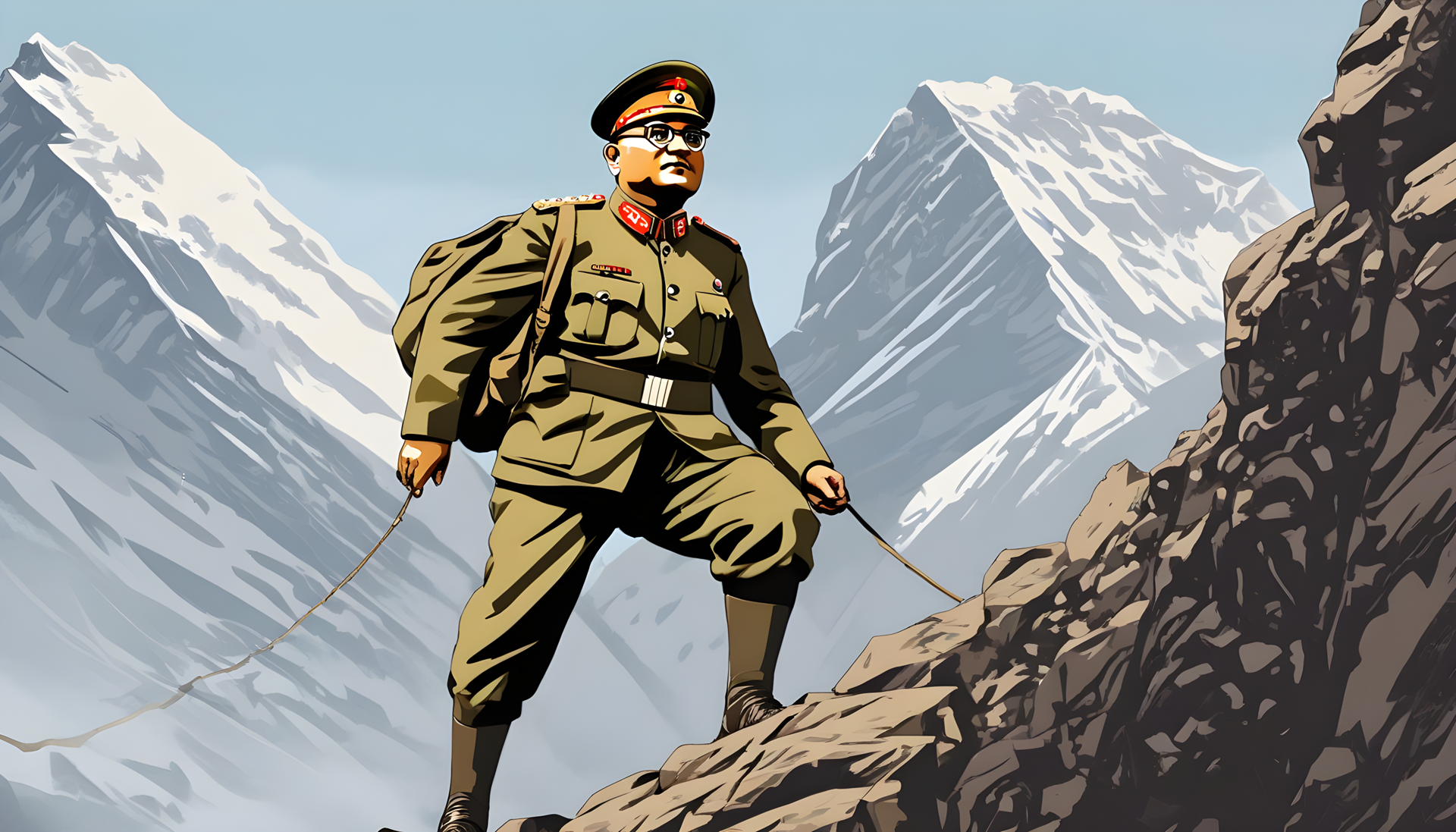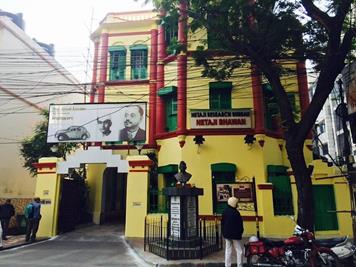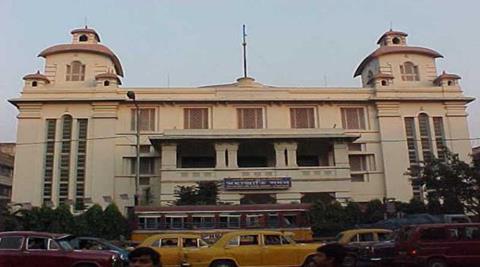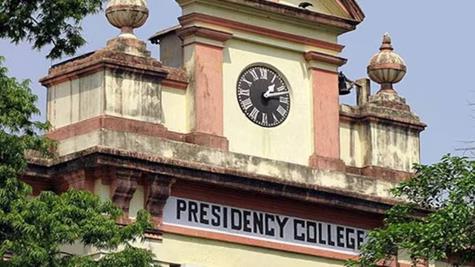Kadam Kadam Badhaye Jaa (কদম কদম বঢ়ায়ে যা)
….. March with Netaji Subhas Chandra Bose (1 day)

Netaji Bhawan, also known as Netaji Bhavan, is a historic building in Kolkata, West Bengal, dedicated to commemorating the life of Indian nationalist Subhas Chandra Bose. The building serves as a memorial and research center, currently functioning as the headquarters of the Netaji Research Bureau.
Constructed in 1909 by Bose’s father, the house is maintained by the Netaji Research Bureau and features a museum, archives, and a library. Sugata Bose and his mother, Krishna Bose, are responsible for managing the Bureau. The address of Netaji Bhawan is on Lala Lajpat Rai Sarani in Kolkata.
Notably, Subhas Chandra Bose escaped from house arrest at Netaji Bhawan in 1941, making his way to Berlin and subsequently traveling to Japan-occupied Southeast Asia. There, he organized the Indian National Army and collaborated with the Imperial Japanese Army to resist British rule.
The museum within Netaji Bhawan exhibits relics, including footprints, associated with Bose. Following the Second World War, prominent figures such as Mohandas K. Gandhi and Jawaharlal Nehru visited Netaji Bhawan.
Overall, Netaji Bhawan stands as a significant historical site, preserving the legacy of Subhas Chandra Bose and his contributions to India’s struggle for independence.

Constructed in 1909 by Bose’s father, the house is maintained by the Netaji Research Bureau and features a museum, archives, and a library. Sugata Bose and his mother, Krishna Bose, are responsible for managing the Bureau. The address of Netaji Bhawan is on Lala Lajpat Rai Sarani in Kolkata.
Notably, Subhas Chandra Bose escaped from house arrest at Netaji Bhawan in 1941, making his way to Berlin and subsequently traveling to Japan-occupied Southeast Asia. There, he organized the Indian National Army and collaborated with the Imperial Japanese Army to resist British rule.
The museum within Netaji Bhawan exhibits relics, including footprints, associated with Bose. Following the Second World War, prominent figures such as Mohandas K. Gandhi and Jawaharlal Nehru visited Netaji Bhawan.
Overall, Netaji Bhawan stands as a significant historical site, preserving the legacy of Subhas Chandra Bose and his contributions to India’s struggle for independence.

Mahajati Sadan is an auditorium situated on Chittaranjan Avenue in Kolkata, West Bengal, India. Primarily used for Bengali theaters, the auditorium also hosts seminars in its seminal hall. Notably, Mahajati Sadan played a significant role in India’s freedom movement, and Rabindranath Tagore referred to it as the “House of the Nation.”
The inception of Mahajati Sadan can be traced back to a request made by Subhas Chandra Bose to Rabindranath Tagore. In response, Tagore laid the foundation stone of Mahajati Sadan on August 19, 1939. Unfortunately, the construction work on this building came to a halt due to the disappearance of Bose.
Following India’s independence, Dr. Bidhan Chandra Roy expressed interest in completing the construction of Mahajati Sadan. To facilitate this, the “Mahajati Sadan Act 1949” was enacted, providing the necessary legal framework for the completion of the building.
Mahajati Sadan stands as a testament to the historical and cultural significance of Kolkata, reflecting its role in the freedom movement and the collaborative efforts of notable figures like Subhas Chandra Bose and Rabindranath Tagore in shaping the cultural landscape of the region.

The inception of Mahajati Sadan can be traced back to a request made by Subhas Chandra Bose to Rabindranath Tagore. In response, Tagore laid the foundation stone of Mahajati Sadan on August 19, 1939. Unfortunately, the construction work on this building came to a halt due to the disappearance of Bose.
Following India’s independence, Dr. Bidhan Chandra Roy expressed interest in completing the construction of Mahajati Sadan. To facilitate this, the “Mahajati Sadan Act 1949” was enacted, providing the necessary legal framework for the completion of the building.
Mahajati Sadan stands as a testament to the historical and cultural significance of Kolkata, reflecting its role in the freedom movement and the collaborative efforts of notable figures like Subhas Chandra Bose and Rabindranath Tagore in shaping the cultural landscape of the region.

Subhas Chandra Bose, a key figure in India’s struggle for independence, studied briefly in Presidency college. Bose was an outspoken and politically active student, and his activities led to conflicts with the college authorities. Reportedly incensed by accounts of Prof Edward Farley Oaten’s racist, high-handed behaviour toward his Indian students, Subhas and a few others physically assaulted the professor of history and was expelled due to this. The incident occurred in 1916.
Later The news of Subhas Bose’s alleged death in the Taihoku air crash of 1945 so moved the then 61-year-old Oaten that he wrote:
Did I once suffer, Subhas, at your hands?
Your patriot heart is stilled, I would forget!
Let me recall but this, that while as yet
The Majesty that you once challenged in your land
Was mighty; Icarus-like your courage planned
To mount the skies, and storm in battle set
The ramparts of High Heaven, to claim the debt
Of freedom owed, on plain and rude demand.
High Heaven yielded, but in dignity
Like Icarus, you sped towards the sea.
Your wings were melted from you by the sun,
The genial patriot fire, that brightly glowed
In India’s mighty heart, and flamed and flowed
Forth from her Army’s thousand victories won!
The admiration for Subhas, the grief he felt at his former student’s passing, shines through every line of the poem. It is as though, more than 30 years after their encounter, Oaten was writing an apology as much as an obituary.
Later The news of Subhas Bose’s alleged death in the Taihoku air crash of 1945 so moved the then 61-year-old Oaten that he wrote:
Did I once suffer, Subhas, at your hands?
Your patriot heart is stilled, I would forget!
Let me recall but this, that while as yet
The Majesty that you once challenged in your land
Was mighty; Icarus-like your courage planned
To mount the skies, and storm in battle set
The ramparts of High Heaven, to claim the debt
Of freedom owed, on plain and rude demand.
High Heaven yielded, but in dignity
Like Icarus, you sped towards the sea.
Your wings were melted from you by the sun,
The genial patriot fire, that brightly glowed
In India’s mighty heart, and flamed and flowed
Forth from her Army’s thousand victories won!
The admiration for Subhas, the grief he felt at his former student’s passing, shines through every line of the poem. It is as though, more than 30 years after their encounter, Oaten was writing an apology as much as an obituary.

Following his expulsion from Presidency College, Subhas Chandra Bose joined Scottish Church College. He pursued his education at Scottish Church College and earned his B.A. in 1918 with honors in philosophy. Notably, he secured the second position among all philosophy students in Calcutta University.
At the urging of his father, Subhas Bose decided to travel to England to prepare for and appear in the Indian Civil Services (ICS) examination. This decision marked a crucial phase in Bose’s life, and it set him on a path that would eventually lead to his active involvement in the Indian independence movement.

At the urging of his father, Subhas Bose decided to travel to England to prepare for and appear in the Indian Civil Services (ICS) examination. This decision marked a crucial phase in Bose’s life, and it set him on a path that would eventually lead to his active involvement in the Indian independence movement.

